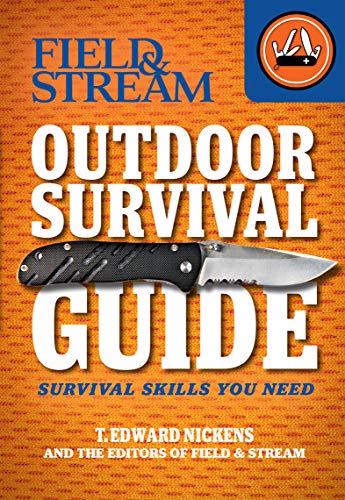Want to know how to get better at hiking? In this simple guide, we’ll give you tips and tricks to make your hiking experience special.
Hiking is an activity that requires physical stamina, mental resilience, and a strong desire to explore the world around us.
With proper planning and preparation, anyone can become an expert hiker capable of tackling any terrain with confidence.
In this article, learn some helpful tips and tricks that will get you in shape, and provide tools to hike like a pro.
Key Takeaways
- Acquire necessary equipment for hiking
- Plan ahead by researching the trail, weather conditions, and terrain difficulty
- Focus on physical conditioning and mental preparation
- Prioritize proper nutrition for energy during hiking
In This Article
Getting Properly Equipped
Before embarking on a hiking trip, it is important to ensure that the necessary equipment is acquired. Packing smartly and choosing gear that is suitable for the environment and type of hike are key elements in setting yourself up for success.
Investing in a good quality backpack can offer comfort and stability, while proper footwear should be lightweight yet supportive enough to protect your feet from potential hazards.
It is also essential to bring appropriate clothing layers so you can adjust as needed throughout the course of your journey.
Other items that may come in handy include a first-aid kit, navigational tools such as maps or GPS devices, snacks, water bottles or hydration systems, sunscreen, insect repellent, and extra batteries for any electronic devices.
Embarking on a hiking trip without the necessary equipment is like trying to bake a cake without any ingredients or tools.
Here’s an excellent video from ‘Useful Knowledge’ that explains basic essentials for beginner hiking.
Just as a well-stocked kitchen with all the necessary utensils, ingredients, and appliances allows you to successfully create a delicious cake, having the right hiking gear is crucial for a successful and enjoyable outdoor adventure.
Safety Considerations
Safety is a critical consideration for hikers. Planning ahead by researching the trail, expected weather conditions, terrain difficulty level and distance are important steps to take before setting out on a hike.
Trail etiquette should also be considered when sharing the path with other hikers. Additionally, it’s important to bring enough water and snacks as well as any emergency supplies that may be needed such as sunscreen, first aid kit or insect repellent.
Here are some safety considerations for hikers:
- Pack sufficient food and water for the duration of the hike.
- Wear appropriate clothing and footwear for the anticipated terrain and weather conditions.
- Make sure you have basic first-aid supplies in case of an emergency or injury.
- Be aware of trail rules, regulations, wildlife encounters and potential hazards along your route.
Training for Improved Hiking Performance
Training is essential for enhancing hiking performance. Physical conditioning and mental preparation are both key components of a successful hike. In order to ensure the best experience, hikers should focus on building their endurance, strength, flexibility, and balance prior to their trek.
| Repetition | Activity | Benefits |
|---|---|---|
| 10-15 times daily | Stretching exercises like lunges or squats | Increased flexibility in muscles and joints; reduced risk of injury from tightness or strain during physical activity |
| 3-5 times weekly/2 minutes each session | Abdominal crunches & planks for core strength building and stability during hikes. | Improved posture and overall core strength; Reduced potential for abdominal injuries during hikes. |
| 2-3 times weekly/30 minutes each session | Cardio exercise such as running, swimming, cycling or rowing machine workouts. | Improved aerobic capacity; strengthened heart muscles; increased energy levels for longer hikes. |
Nutrition and Hydration for the Trail
Nutrition and hydration are essential for successful hiking, as they provide the body with energy and help to prevent fatigue. Staying energized on the trail is key to completing a hike in an enjoyable and safe manner.
Proper nutrition prior to and during a hike involves having nutrient-rich food items with long-lasting energy that can be easily packed and consumed while on the trail.
In addition, refueling strategies should be employed throughout the hike by eating snacks or meals at regular intervals to sustain energy levels.
Hydrating sufficiently before, during, and after a hike is also crucial in order for hikers to perform their best on the trail.
- LARGE OPENING FOR EASY CLEANING – CHERAINTI 2l hydration bladder has one of large opening, and the big opening makes for easy pouring of water. It is also fairly wide for a hand or bottle brush easily access to the interior water bladder for hiking backpack. The screw on cap goes on and off easily. For cold water, simply add ice cubes directly from a scoop or refrigerator ice dispenser. The smooth inner of water reservoir promotes health and is easy to clean.
- PREMIUM QUALITY – The whole hydration bladder is made of premium material. CHERAINTI water reservoir is taste free, SGS certified and food grade. This tested to comply with international safety standards. It won’t leave a bad taste in your drink. The water bladder 2l passed pneumatic pressure test, it is pressure-tolerant. Double sealing side technique has greatly improved durability hydration pack bladder.
- 【Professional Upgrade Design – Ergonomic】: The hydration pack backpack is lightweight and breathable, ventilated mesh padding is added to the shoulder straps, waist straps, and back area to ensure the comfort of the pack. This water backpack can meet your all-day-long hydration needs. The 3l hydration bladder backpack has 2 reflective strips and 1 reflective strap that can safeguard your riding.
- 【Large Water Bladder】: Insulated hydration backpack’s overall capacity is 18L+3L water bladder, the water bladder is made of PEVA material and does not contain BPA. Durable, insulation, kink-free sip tube, and push-lock cushioned bite valve; Large 2-inch (5 cm) opening easy to add ice and clean and dry, just bottom up and it will dry on its own.
- WATER NEVER TASTED SO GOOD: During a long hike having water so convenient and still cold…there’s nothing like it. Lightweight with a custom fit, you’ll forget you have it on until you need it.18L pack give you plenty of storage for your day hike
- HYDRATION BLADDER INCLUDED: 2-liter water bladder included; Complete with durable, kink-free sip tube and innovative push-lock cushioned bite valve; Large 2-inch (5 cm) opening for ice that also makes cleaning easy
- LIGHT & COMPACT PERFOMANCE: Designed with cyclists, runners, and hikers,team outing in mind, the hydration pack are compact and aerodynamic, offering featherweight stability on your back with minimized wind drag. They ensure top-notch body performance, perfect for intense activities from marathon training to cycling adventures.
- INSULATED WATER BACKPACK:This hydration backpack boasts efficient insulation to maintain water temperature for up to 4 hours. With segregated compartments, it conveniently stores snacks like sandwiches, chocolates, and fruits, keeping them fresh. A perfect outdoor companion, it caters to both instant hydration and energy needs during outdoor pursuits.
Adequate hydration helps maintain muscle performance, mental alertness, as well as prevents dehydration related illnesses such as heat exhaustion or heat stroke.
Setting and Achieving Goals
Establishing and fulfilling objectives is essential for successful hiking. To achieve this, hikers must:
- Research trails: Identifying the trail difficulty, elevation changes, and length of time needed to complete a hike helps hikers prepare physically and mentally.
- Physically prepare: Hikers should condition their bodies with aerobic exercises like running or biking so they can handle the physical demands of the trail.
- Mentally prepare: Positive thinking and visualization help hikers stay motivated throughout their hikes. Visualizing oneself at various points on a hike can also help boost confidence levels.
What’s Next?
Hiking is a challenging and rewarding outdoor activity that can be enjoyed by people of all ages.
To get better at hiking, it is important to ensure safety and be properly equipped for the trail. Training, nutrition, and hydration are also key components for success on the trail.
Setting realistic goals will help to challenge oneself while also providing a sense of accomplishment when achieved.
With hard work, dedication, and a proper attitude hikers can reach heights they never thought possible – quite literally!
Hiking is an incredibly fulfilling experience that anyone can excel at with just a bit of practice.
- Quality material used to make all Pro force products
- Tested in the field and used in the toughest environments
- Amazon Kindle Edition
- Nickens, T. Edward (Author)
- Amazon Kindle Edition
- Apelian, Dr. Nicole (Author)











We are participants in the Amazon Services LLC Associates Program, an affiliate advertising program designed to provide a means for sites to earn advertising fees by advertising and linking to Amazon.com